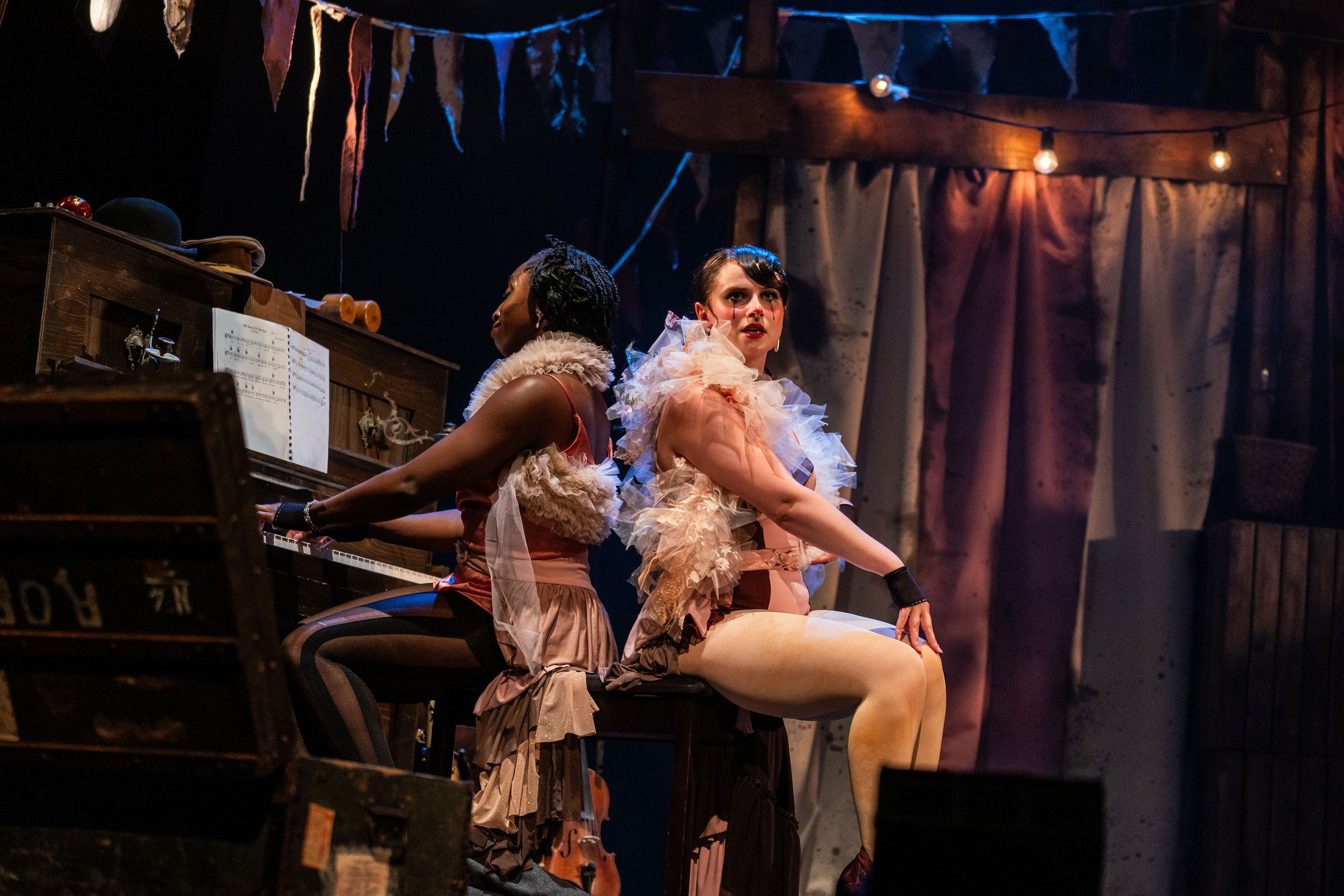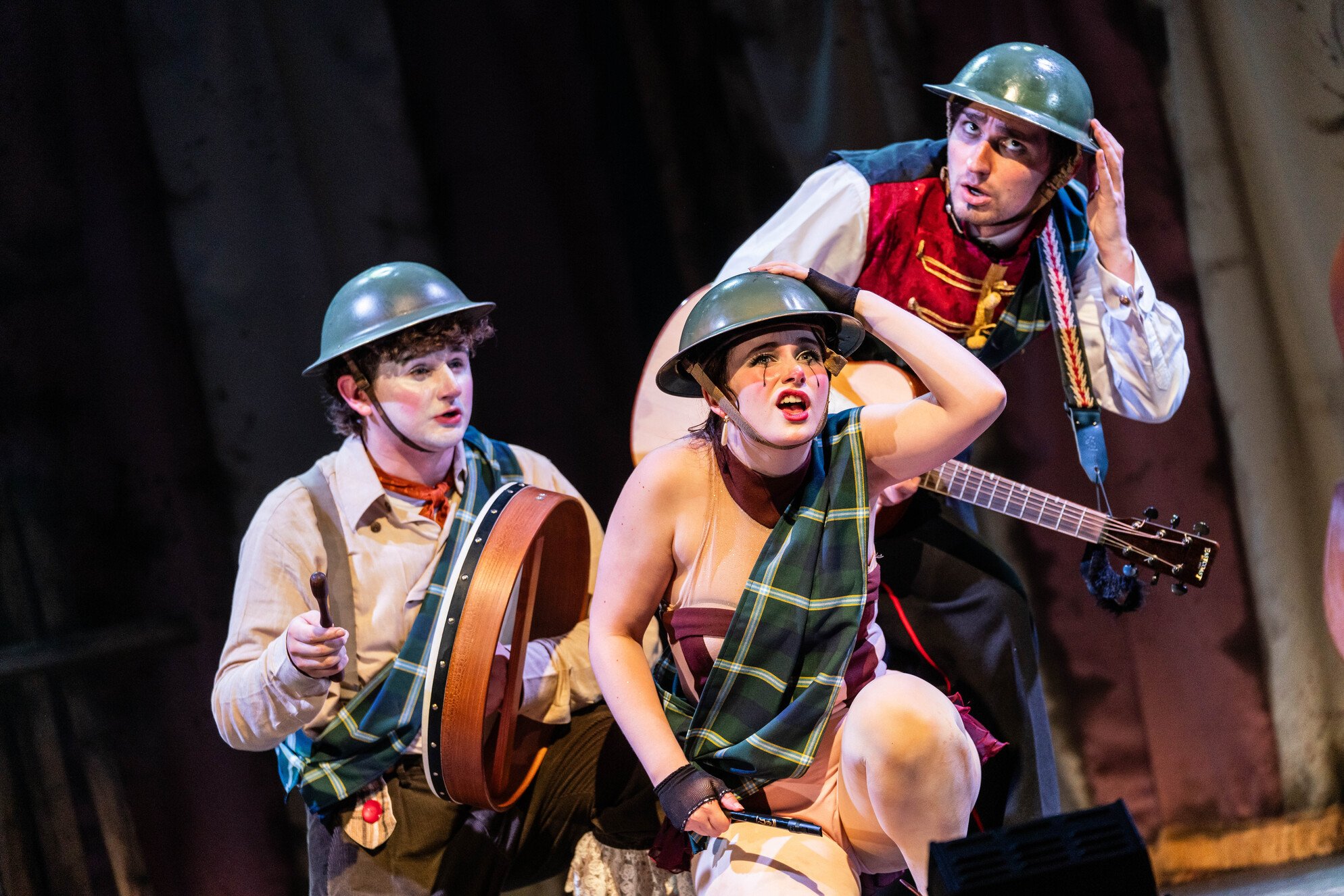REVIEW |Oh What a Lovely War, Southwark Playhouse Borough
Oh What a Lovely War UK tour. Photo credit Alex Harvey-BrownWritten by Eleanor
Disclaimer: We were gifted a ticket in return for an honest review. All opinions are our own.
Oh What a Lovely War is a historically-based satire set during the First World War. This series of sketches, vignettes, and songs poke fun at the ideals of the time, the snobbish upper classes, and the series of events which led to one of the darkest periods in world history.
Written by Joan Littlewood, and now reimagined by Black Eyed Theatre in association with South Hill Park Arts Centre, this production is celebrating the 60th anniversary of the original show. This contemporary revival is rich, dark and impactful - one of the most unique shows I have seen this year.
As you enter the Southwark Playhouse Borough you are greeted with authentic music from the time and a set designed by Victoria Spearing to look like the inside of a circus tent, with pinstripes and draped fabric. Before the start of the show, some of the actors entered the auditorium and engaged with the audience which really helped to set the tone of the production as a bit tongue in cheek. This also gave a first glimpse of the actor’s make up and costumes, which remained consistent throughout. The clown-like makeup matched the set design and was very unique; certainly not what I was expecting, but something I came to realise fit the tone of the show perfectly. Similarly, the dishevelled and muted tones of the costumes (designed by Naomi Gibbs) also matched the setting. This all helped to create a dark and mysterious atmosphere which sat within the right time period.
The first half of Oh What a Lovely War covers the entirety of 1914, beginning with a ‘war games’ skit describing how the First World War started and ending with the Christmas armistice. Some of the more historically focused scenes may be hard for some to understand (I heard some people during the interval state that they had no idea what was going on initially) but the characters in the show acknowledge this and use it as another way to poke fun at the past. My favourite sketch was focused on a British Army Major teaching a lineup of men to use their bayonets. The characterisation by Harry Curley here was just excellent and so so funny. Another scene with a translator really leant into the satire and comically demonstrated the difficulties of having international allies.
The most effective element was how the audience as a whole would be pulled in one direction and then the next; from a light song and dance moment to specific details on the dead and wounded. This was very unsettling but worked well for the piece as a whole. The song which ended the first act and the ensembles’ accompanying actions was particularly moving.
As opposed to a separate orchestra, all the instruments were either played on stage or behind the large drapes by the actors themselves. This made the musical numbers very engaging and also heightened the comedy in some cases. From ‘It’s a Long Way to Tipperary’ to ‘Sister Susie’s Sowing Shirts’, this range of music hall numbers (Orchestrated by Tom Niel) perfectly evokes pre-war and early war positivity and brings needed joy to the otherwise harrowing subject matter.
The second act opens in 1915 with a continuation of ‘war games.’ A group of upper-class men are going shooting with an American and discussing the weapons they are currently using on the enemy. This is followed by a wonderfully witty and satirical ballroom scene with a group of notable British Generals, including Field Marshal Douglas Haig, and their wives. The way this was acted out on stage was so simple and yet so clever. The plot covers many notable moments from 1915-1918, including the end of WW1.
The same themes of dark and light are juxtaposed throughout the second half, but as the war goes on and morale is lost I could feel a sense of foreboding in even the most upbeat songs. The repetition of ‘I Don’t Want to Be a Soldier’ as Haig’s brutal campaigns are detailed was a principal example of this. There are also a greater number of emotive moments, including a pause following an audience singalong which really left a lasting impression. The success of this production comes from the fact that it hits the right tone for this kind of material. Poking fun at certain events and the decisions of distant Generals while honouring those who fought and those who died.
Oh What a Lovely War really gives an opportunity to every actor in the ensemble to take the lead and to shine. Like the content itself, each actor shows reverence to those affected by the war while utilizing excellent comic acting and timing to make you laugh at those with power. Chioma Uma gave a captivating performance and Alice E Mayer was the perfect 1900s show girl. Euan Wilson gave a standout performance as Haig in particular, as did Christopher Arkeston as ukelele-playing ringmaster. It was Harry Curley who made me laugh the most with his excellent comic acting and I very much hope to see Tom Crabtree, who made his professional debut in this show, in further productions. The whole group were all very talented singers, actors, comics and musicians.
I do recognise that the concept and content of Oh What a Lovely War may not be to everyone’s taste. It is rooted in complex history and the fundamental idea of using humour to get through tough times, and much of the war is still difficult to think about. But I very much enjoyed the way this show illustrated important moments, with some colossal tonal shifts, and authentically harked back to the popular music of the time. Although I may not recommend it to everyone, if you enjoy vibrant, dark and emotive theatre, then you will certainly enjoy this excellent revival.
★ ★ ★ ★
Oh What a Lovely War is running at Southwark Playhouse Borough from the 21st November – 9th December 2023.












